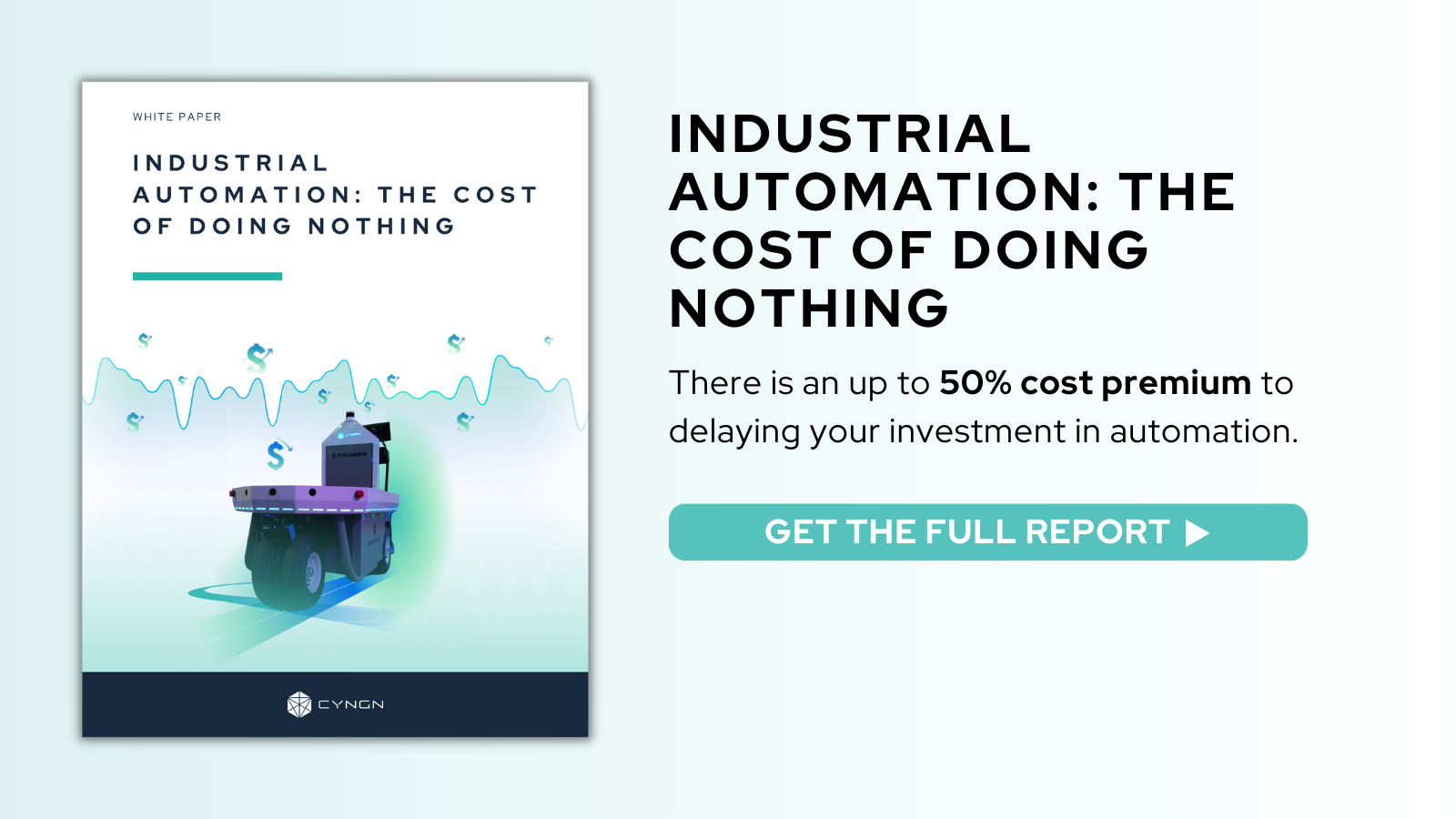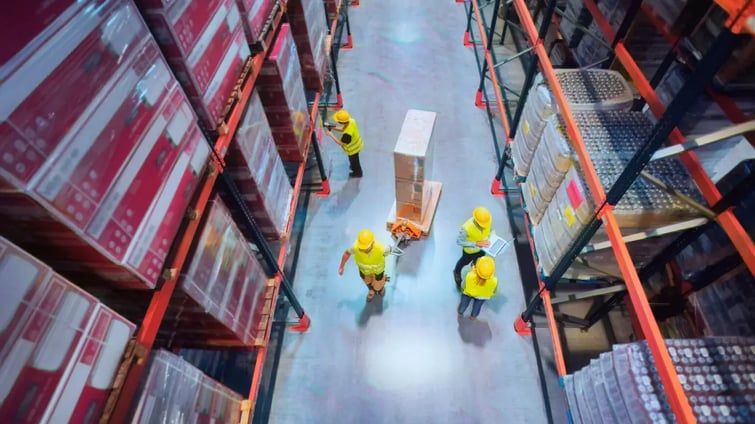Do you struggle with employee recruitment and retention? You’re not alone. In fact, more than half of all manufacturing and logistics leaders face this challenge. Labor is one of the biggest challenges currently faced by the industry, as it is not only costly, but difficult to find and retain. According to a Deloitte study, it is estimated that by 2030, the impact of manufacturing jobs that remain unfilled could cost the US economy more than $1 trillion.
Therefore, organizations are increasingly relying on industrial automation to address labor challenges. Specifically, industrial autonomous vehicles are a key component in this solution, as they automate dangerous, labor-intensive tasks, improve safety, identify hazards, boost efficiency, and create new categories of work for employees.
As a result, organizations that delay investing in industrial automation will continue to experience significant high, hidden costs associated with labor. These costs include labor shortages, wage inflation, employment costs, labor turnover, and training expenses.
Now, let's explore these hidden costs and how industrial autonomous vehicles can help minimize them —
Hidden Cost: Labor Shortages and Wage Inflation
Labor shortages rank in the top 4 greatest challenges facing manufacturing, transportation, and supply chain leaders, with over 50% citing employee retention as their single biggest challenge. When we consider that it takes 30-60 days to fill an open position, the enormous impact of employee hiring and retention on productivity becomes clear.
The challenge of labor availability extends well beyond the pandemic. According to a study by Deloitte and the Manufacturing Institute, 77% of manufacturers say they will continue to have difficulties attracting and retaining workers in the long run. Furthermore, almost 8 in 10 manufacturing executives surveyed stated that not filling jobs has a moderate to very high impact on maintaining production levels.
Meanwhile, wages for manufacturing workers are steadily rising due to the labor shortage, with around a 6% salary increase for existing employees and a 6.8% increase for new hires. Moreover, labor costs in the manufacturing sector alone saw around a 7.7% increase in the fourth quarter of 2022. As a result, labor costs constitute, on average, 65% of most warehouse facilities’ operating budgets. By delaying your investment in automation, your organization is only raising your operation costs.
The Solution:
Autonomous vehicles can address the labor shortage issue head-on by taking on repetitive tasks and transport routes, freeing up an estimated 30%-50% of a skilled worker’s time. Companies can increase their production with fewer workers and at the same time assign their employees to more important and valuable tasks.
In turn, organizations can further ease the impact of wage inflation on their business, improving production levels without increasing wages. Unlike human labor, autonomous vehicles do not increase their price quarter over quarter.
Hidden Cost: Employment Costs
While workers' salaries are indeed increasing, it is not the only cost impacting organizations when it comes to labor. In reality, there are numerous employment costs associated with hiring, retaining, and losing employees that are significant. These employment costs can include sick days, training costs, benefits coverage, recruitment expenses, employer contributions to healthcare, etc.
The Solution:
Put simply, the more mundane human tasks that can be taken on by AMRs, the fewer employment costs an organization has to incur.
Hidden Cost: Labor Turnover and Training
High labor turnover can also have a significant impact on a company’s financial health. In 2022, the average turnover rate in the manufacturing industry averaged around 49%. The costs linked to turnover can be staggering, as replacing a worker can be extremely expensive and time-consuming.
The cost of turnover can be calculated based on a range of expenses related to finding, hiring, and training new employees. However, the financial impact of turnover goes beyond these direct costs and also includes indirect costs, such as reduced morale, decreased productivity, and increased errors, which accumulate to hurt a company's bottom line.
The expenses associated with employee training can be particularly significant. Specifically, training a new warehouse worker costs an organization more than $1,000, or around 4% of an employee's total salary.
As a result, it’s estimated that it costs a company around $7,000 to replace a single warehouse worker. To put it into perspective, if you own a warehouse with 100 workers, and the average turnover rate in the manufacturing sector is currently 43%, you could potentially lose 43 employees each year. Overall, turnover could cost you at a minimum, $301,000 every year.
The Solution:
Industrial automation can help alleviate high labor turnover and in turn, training costs for organizations. More obviously, unlike human workers, these vehicles do not require extensive and costly training.
Additionally, by replacing tedious tasks with AVs, we not only reduce the number of employees that require training resources, but we also alleviate boredom in the workflows of current staff. This can reduce the likelihood of employee churn. In fact, a study at Wharton discovered that by improving the quality of work for existing employees, AVs can significantly increase worker retention.
As you can see, investing in industrial automation now allows your organization to immediately experience the benefits associated with labor. This, in turn, can make your business more competitive, scalable, profitable, and better equipped to handle ongoing labor shortages and ever-changing market shifts.
Looking to learn more about AV solutions? At Cyngn, we offer organizations a safe and reliable way to introduce autonomous vehicle technology to their vehicles, enabling them to swiftly and easily harness the advantages of industrial automation while avoiding the cost of doing nothing. By tapping into the power of AV technology, your business can increase productivity, address labor variability, gain real-time visibility into your facility, improve safety, and scale and adapt.
The following passage is a modified excerpt from our latest white paper, Industrial Automation: The Cost of Doing Nothing. Access the full report here and continue to discover why delaying your investment in automation can result in up to a 50% cost premium.

